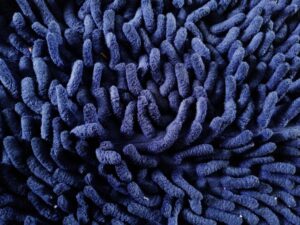Bleach and disinfectants are often lumped together as heavy-duty cleaners—but they’re not interchangeable. Knowing the difference can help you choose the right product, avoid damage to surfaces, and protect your health (and lungs) in the process.
Let’s break down what each does best, when to use them, and how to stay safe while doing it.
✅ What Bleach Does Well (Sanitizing Non-Porous Surfaces)
Bleach is incredibly effective at killing bacteria, viruses, and mold—but only when used correctly.
It works best on:
- Non-porous surfaces like sinks, toilets, and tile
- Sanitizing cutting boards (when diluted properly)
- Whitening fabrics and removing mildew
A properly diluted bleach solution (usually 1:10 ratio with water) can sanitize hard surfaces in kitchens and bathrooms in under a minute.
🚫 What Bleach Doesn’t Do (Clean Dirt or Grime)
One common mistake? Using bleach to “clean” dirty areas. In reality, bleach doesn’t remove dirt—it disinfects.
You’ll need to:
- First clean the surface with soap and water
- Then apply bleach if disinfection is still needed
If you skip the first step, bleach won’t reach the bacteria hiding under grime—and your “clean” surface might not be clean at all.
🧼 How Disinfectants Work Differently
Disinfectants are designed to clean and sanitize at the same time. Many contain surfactants (like soaps) that lift grime and eliminate microbes.
Compared to bleach:
- They’re often safer on more surfaces (e.g., electronics, toys, food-prep areas)
- Less likely to discolor or corrode
- Come in ready-to-use sprays with targeted applications
Look for EPA-approved disinfectants for virus and bacteria control—and always follow the product’s dwell time instructions for full effectiveness.
🚻 Which One to Choose (Bathrooms, Kitchens, Kids’ Spaces)
Use bleach when:
- Sanitizing after illness
- Removing mold and mildew
- Whitening laundry or scrubbing tile grout
Use disinfectant sprays or wipes when:
- Cleaning children’s toys, highchairs, or counters
- Wiping down electronics, remotes, and handles
- Cleaning areas with frequent touch points (like doorknobs and light switches)
For most day-to-day cleaning, a disinfectant is more practical—and gentler on surfaces.
⚠️ Safe Usage Tips to Avoid Fumes and Damage
Both bleach and disinfectants can be powerful—but dangerous—if misused.
Keep it safe:
- Never mix bleach with vinegar, ammonia, or alcohol—it can create toxic gases
- Always use in a well-ventilated area
- Wear gloves and avoid skin contact
- Rinse surfaces if food contact is expected
- Store all cleaners out of reach of children and pets
✅ Wrap-Up
Bleach and disinfectants both have a place in your cleaning routine—but they’re not one-size-fits-all solutions. Use bleach sparingly and strategically, and opt for disinfectants when cleaning day-to-day messes, especially in high-touch or sensitive areas.



